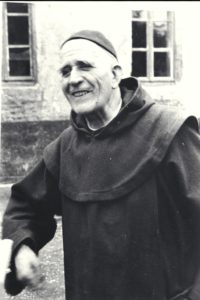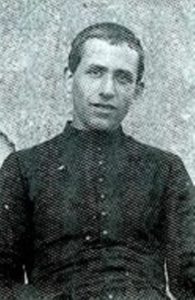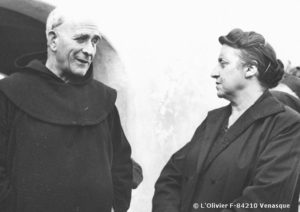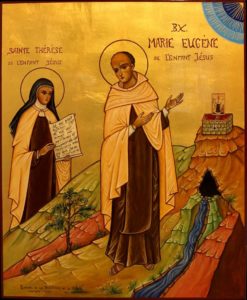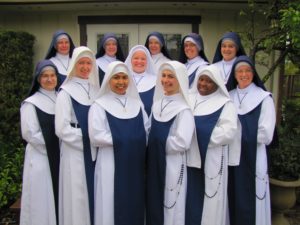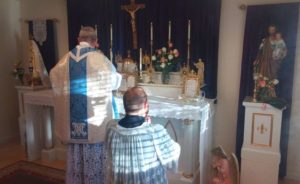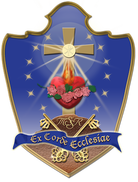Many of you know that our National Director, Fr. Thomas Nelson, O.Praem., prayed to Bl. James Kern during his recent battle and miraculous recovery from mouth cancer. Here is the story behind this beloved Norbertine.
The amazing life and death of Blessed James Kern
“Throw yourself into the breach!”
By Sr. Joanna Marie, L.M.
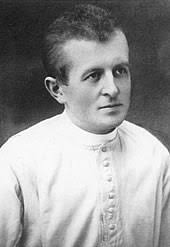 “Greater love has no man than this, that a man lay down his life for his friends.” (Jn 15:13). This verse describes the beautiful life of Bl. James Kern, a priest, soldier, and true hero of the Church. Here is his little-known story:
“Greater love has no man than this, that a man lay down his life for his friends.” (Jn 15:13). This verse describes the beautiful life of Bl. James Kern, a priest, soldier, and true hero of the Church. Here is his little-known story:
A baby boy, Francis Alexander (Blessed James Kern), was born on April 11, 1897, in Vienna, Austria, to Francis and Anna Kern. When Anna was pregnant with her son, she visited a Marian Shrine and prayed that if her child was a boy he would be called to become a priest. She promised Our Lady that she would do all she could to teach her child how to be holy and to love and revere the priestly calling.
When Francis was four or five years old, he received some ordinary toys for Christmas. His mother asked if he liked them and was shocked when he sadly answered: “No,” explaining that he had hoped to receive “an altar with candlesticks and candles and flowers.” His parents soon found a play altar for him.
Francis entered the minor seminary at age eleven. His life was built upon prayer and he received Holy Communion daily. He was intensely devoted to the Sacred Heart of Jesus and the Blessed 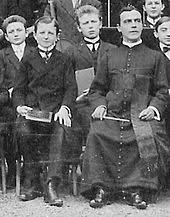 Virgin Mary. His classmates appreciated his joyful and childlike spirit and noticed that he was one of the happiest young men in their peer group. He enjoyed a good joke and had a quick sense of humor! Caring for the sacristy was his favorite assignment during his time in the minor seminary, as he loved deeply the Sacred Liturgy. He loved to use his strong clear voice to sing, praising the Lord with his brothers in their times of communal prayer.
Virgin Mary. His classmates appreciated his joyful and childlike spirit and noticed that he was one of the happiest young men in their peer group. He enjoyed a good joke and had a quick sense of humor! Caring for the sacristy was his favorite assignment during his time in the minor seminary, as he loved deeply the Sacred Liturgy. He loved to use his strong clear voice to sing, praising the Lord with his brothers in their times of communal prayer.
Francis was studying diligently with his eyes fixed on the goal of the priesthood when World War I broke out. On October 15, 1915, at age 18, Francis reported to fight for his country with the 50th infantry in Salzburg. A devoted patriot, Francis was proud to be a soldier of the emperor. But he was a soldier for God before all else and was unashamed to openly practice his faith, serving at Holy Mass (while wearing his military uniform under the cassock) despite the ridicule of some of his fellow soldiers.
On New Year’s Day, 1916, Francis knelt adoring Jesus Christ exposed in the monstrance in Saint Blase’s Church in Salzburg, Austria. The soldier made a request of His Lord that would soon be granted. He prayed… to be showered with suffering. His deepest wish was to be like Jesus, Who suffered for the sake of others.
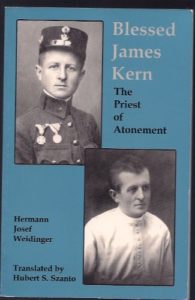 Francis’ life changed forever on September 10, 1916 when his platoon was attacked by Italian forces. During the attack, he witnessed one of his comrades fall mortally wounded. Francis was deeply saddened and said the prayers for the dying with the man. The attack continued, and Francis bravely fought on. The following day, he was struck with a bullet, sustaining severe wounds to his lungs and liver.
Francis’ life changed forever on September 10, 1916 when his platoon was attacked by Italian forces. During the attack, he witnessed one of his comrades fall mortally wounded. Francis was deeply saddened and said the prayers for the dying with the man. The attack continued, and Francis bravely fought on. The following day, he was struck with a bullet, sustaining severe wounds to his lungs and liver.
When Francis finally arrived at a hospital two days later, his wounds were infected, and he had a high fever. To the amazement of the doctors and nurses, the suffering seminarian-soldier was heard singing: “Trust my soul, confidently trust in the Lord. He helps those who trust in Him. In trial and distress our faithful God will protect you.” For nine months, his life hung in the balance. He battled the infection and endured intense pain and a surgery to remove a piece of one of his ribs. He was awarded the silver medal and promoted to second Lieutenant for his bravery.
When he was strong enough, Francis returned to the seminary. For a time, he was excused from military service due to his weakened health. However, he was called to fight again and returned to the battlefield.
The war ended in 1918, leaving political chaos in its stead. This confusion and revolutionary spirit did not leave the Catholic Church untouched. In the newly established “Czechoslovakia,” a dissident Czech “national church” was being founded by a group of misguided priests and religious. This “national church” was not in union with the Pope. One of the leaders of this movement was a priest named Isidore Bogdan Zahradnik, a member of the religious community called the Canons Regular of Prémontré, also known as the Norbertines. The press found out about this scandal and spread the story like wildfire.
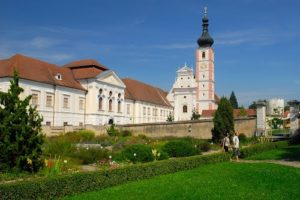
Francis was profoundly affected when the news reached him. He felt deeply the pain that the fall from grace of this priest was causing the Sacred Heart of Jesus. Recalling the experience of seeing his comrade fall mortally wounded on the battlefield, Francis realized this was far worse. A priest—one of God’s soldiers in the battle for souls—had fallen. He heard an interior voice from deep in his soul saying: “Throw yourself into the breach! Take the place of the deserter!” He knew what he had to do. He would enter the Norbertine Order and take the place of this fallen priest. In this way he would make direct atonement to the Sacred Heart of Jesus as a sacrificial soul. His spiritual director recognized this as a unique inspiration and wanted to test that it was truly from God. He advised Francis to wait for one year before joining the Norbertines. At the end of the year, Francis’ desire was stronger than ever. On October 18, 1920, he entered the Norbertine Abbey of Geras and received the religious name “James.”
During his seminary days and time of religious formation, James often prayed, “Dear God, let me live to offer the Holy Sacrifice of the Mass at least once.” His deep and persistent longing would soon be fulfilled. On July 23, 1922, he was ordained to the Holy Priesthood. The prayer of his mother Anna was answered! On August 1, 1922, James had the joy of offering his first Holy Mass. He did so at the convent of a group of sisters who had provided hospitality to him during his time as a soldier-seminarian. The sisters, and indeed all the people from the surrounding village, were overjoyed. Dressed in traditional folk costumes, the villagers gathered in church to celebrate and pray with the new priest. James recounted in his writings: “My first Mass was filled with jubilation. It was like Palm Sunday and Jesus’ entry into Jerusalem. Now I am entering my Holy Week.”
As a young priest, Father James poured himself out tirelessly for the people of the small villages in which he ministered. His sermons drew more and more of the faithful. People were struck by his strong faith and could tell that he spoke from his heart. Many sinners were inspired to be reconciled with God through the Sacrament of Penance. Father James rejoiced every time he was able to bring one of God’s prodigal children back to Him by absolving their sins in the confessional.
The sick and suffering were very dear to him. It never mattered to him if he was called at an inconvenient hour or had to travel a far distance to minister to them. He would travel quickly, praying as he went and encouraging those accompanying him to do so as well. He showed the same compassion for children and young people by teaching them religion and organizing groups and associations to help them grow strong in their faith. He often prayed: “Lord, You may take everything else from me, but give me souls.” As Our Lord thirsted while hanging on the cross, Blessed James was consumed—body and soul—by this thirst after souls. His already fragile health was rapidly declining.
Things came to a crisis on August 10, 1923. Father James had to be taken to the hospital due to hemorrhaging blood and a recurrence of the infection in his chest wound. Because his heart was so weak, he had to undergo surgery without anesthesia. The pain he endured is unimaginable. Initially the surgeon removed three ribs, but soon discovered removing a fourth rib was necessary. Father James made a joke about it, saying he was sorry to be so much trouble! It is reported that he bit through a towel as he silently suffered through horrendous surgery.
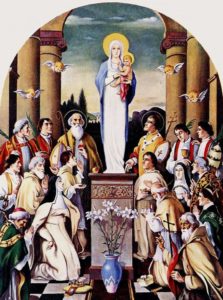 During his time in the hospital, Father James edified everyone around him, especially the doctors and nurses who cared for him. He was constantly cheerful, never complained, and showed deep gratitude, despite his intense suffering. His room was next-door to the chapel and he wrote in a letter at that time that having “the Savior for a neighbor is the crowning of all that is good and beautiful. It is a glorious compensation for the little suffering that I bear.” It took months, but he finally recovered enough to return to the Abbey of Geras.
During his time in the hospital, Father James edified everyone around him, especially the doctors and nurses who cared for him. He was constantly cheerful, never complained, and showed deep gratitude, despite his intense suffering. His room was next-door to the chapel and he wrote in a letter at that time that having “the Savior for a neighbor is the crowning of all that is good and beautiful. It is a glorious compensation for the little suffering that I bear.” It took months, but he finally recovered enough to return to the Abbey of Geras.
Only a few months of life remained for the faithful priest of God. He gave his final sermon on July 20, 1924. He preached on the importance of loyalty to the Bishops and the Church—the very thing he had given his entire life for. He had only to crown this glorious witness by his death. That day would soon arrive. In September, his health collapsed. He underwent another surgery in which four more ribs were removed. Yet another surgery would be required after he built up his strength. This was not to be, however, and the 27-year-old priest knew it. He foretold that he would not live through this final surgery.
October 20, 1924 was the date scheduled for the operation. Amazingly, this was also the day the young Norbertine was supposed to make his final profession of vows in his religious Order. The evening before the surgery, a Sister caring for Father James was preparing a small altar from which he would receive Holy Communion before the operation. He asked her to please prepare everything as beautifully as possible because “the last Communion should be celebrated as solemnly as the first.” He also said: “Tomorrow I will receive my last Communion and celebrate my solemn profession in heaven.” And that is indeed what happened. The priest of the atonement died on the operating table as the Angelus bells chimed at noon.
James Kern was beatified by Pope John Paul II on June 21, 1998. In his homily the Pope said of Blessed James: “Out of love for Christ he did not selfishly cling to life, but consciously offered it for the good of others.” May we all follow his example of sacrifice. Let us confidently ask his intercession in our needs. He is just one step away from canonization. His prayers must bring about miracles in order for him to be canonized a Saint. God wants us to ask the Saints for their prayers. Blessed James Kern, pray for us!
